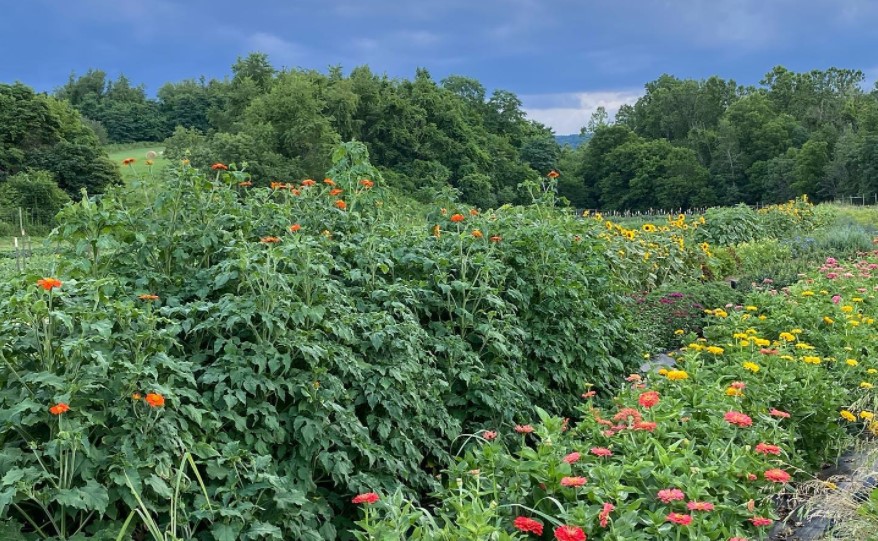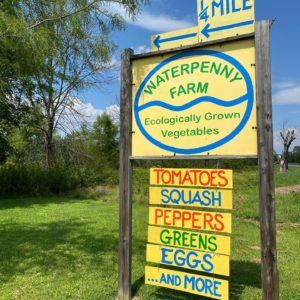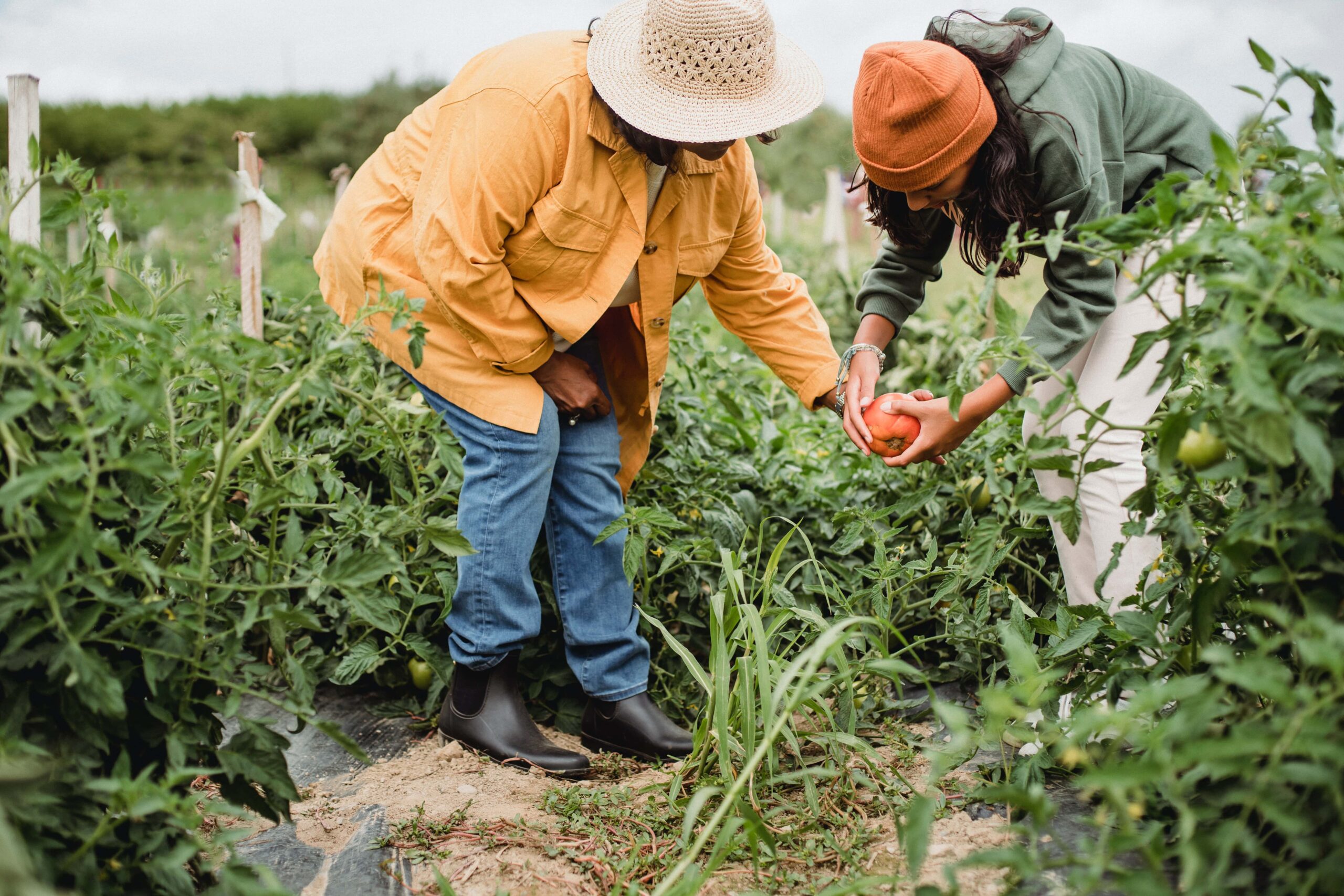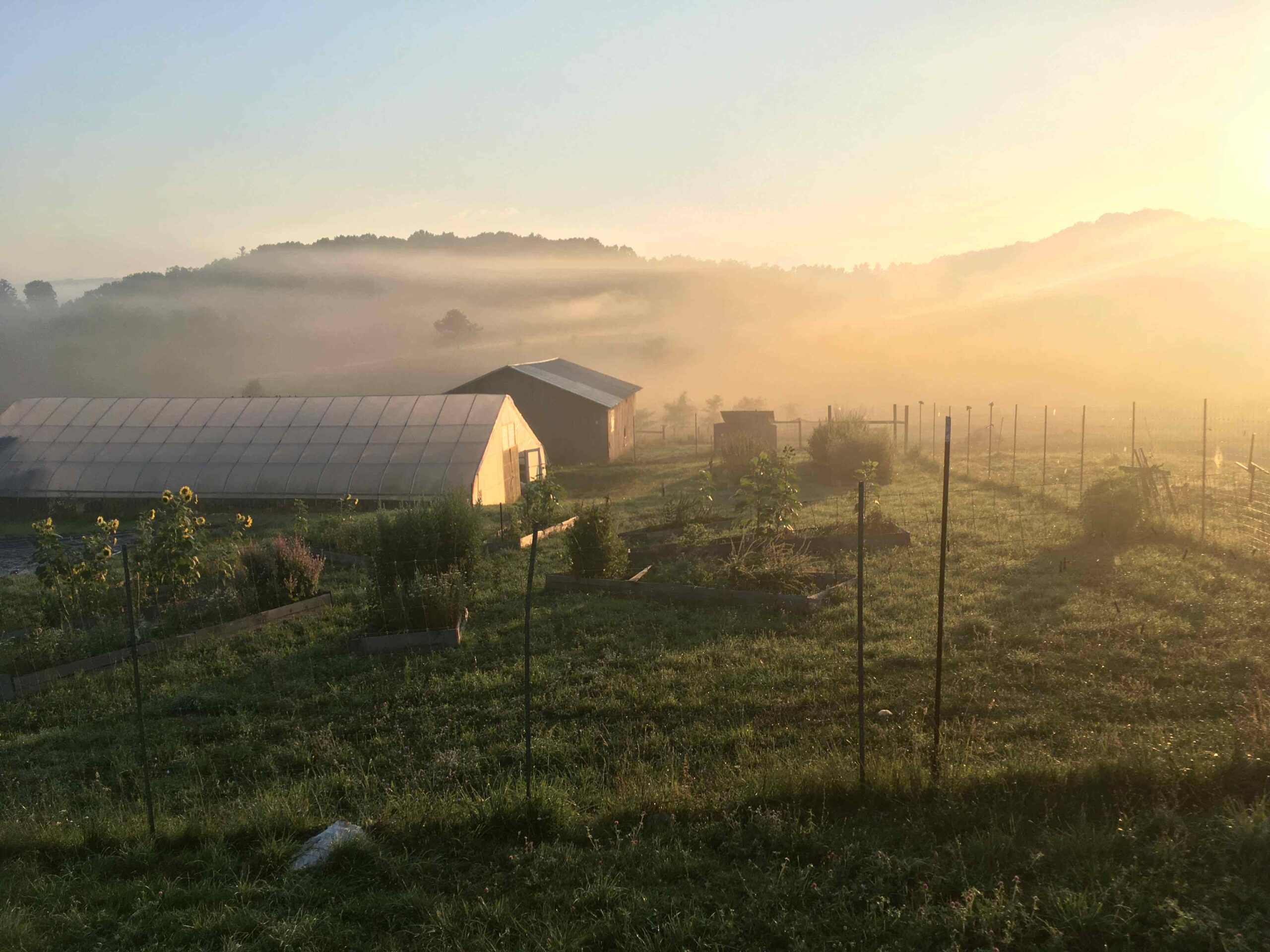
This story starts in 1998 when we were both 25 years old and ready to start our own organic vegetable farm. We’d both worked for Chip and Susan Planck of Wheatland Vegetable Farms in northernmost Virginia for a number of years. During our time there we gained the desire to become farmers, as well as the skills and knowledge necessary to farm on our own full time.
Wheatland Farms, near Purcellville within 50 miles of Washington, D.C., was a great example for us of an economically viable farm. We got to learn the ins and outs of all aspects of the business by working and living alongside our mentors. We liked Virginia as a setting—it has a long but finite growing season and there is a great market for organic vegetables in the D.C. area.
So we drew a big semicircle around Washington on a map and started looking for a farm to buy. We were looking for 10 to 20 acres of land, mostly cleared, with a house we could live in and hopefully some kind of barn as well.
Man seeks farmers
Meanwhile, a man named Cliff Miller called the Plancks at Wheatland, looking for someone to start a vegetable farm on his land with his support. He was a 60-year-old who owned 850 acres near Sperryville in Rappahannock County, about 60 miles west-southwest of DC. He was looking for young entrepreneurial farmers interested in operating their own vegetable farm on a small portion of the land his family had farmed since 1827. The Plancks named the two of us as good candidates and gave him Eric’s number in Annapolis, where he was living for the winter while Rachel worked for the Chesapeake Bay Foundation.
Eric spoke with Cliff on the phone in January 1999 about possibly starting something on his land that summer, and we set up a time to come visit his farm. That visit didn’t work out, and we were a bit skeptical of his proposal, so we didn’t pursue it any further.
We spent time that winter and spring looking at land, and realizing how difficult it might be to get started—land was just too expensive for us. The same people who create the demand for fresh organic vegetables were raising the property values too high for young people like us—who had been making farm-worker pay since graduating from college—to afford farmland.
Our plan changed from buying a farm we could work to working off-farm jobs to fund buying an overgrown farm with a rundown house, and our dream of farming full-time seemed less imminently possible.
When Cliff left another message for us in Annapolis again that summer, we were more eager to follow up and see what this guy was really talking about. It seemed like a chance to start farming the following year, and we were more willing to try an alternative approach to buying our own land.
After several visits to his beautiful farm, we realized that he was genuine, and that it could be a great opportunity for us. He learned more about us and the kind of farming we’d do by visiting Wheatland and the Plancks. We started talking about how it would work to farm his land, and in a lot of ways be preferable to our buying a farm. We decided to come and give it a try.
Combining assets and trust
During our first winter, we met a number of times to establish how our unusual relationship would take form and eventually wrote out an agreement for a two-year trial period. We all signed it and were glad to have a lot of things spelled out, but it wasn’t really a legal contract. We all trusted each other to treat one another fairly and honestly. Our lack of a more formal contract never gave us any problems, but there were times when we wondered about what we’d do if something unexpected happened.
|
The main assets we had were our knowledge, experience and energy, along with a small amount of savings and some extra money borrowed from our families. The main contributions Cliff had were his land, a house and barn; some tractors and equipment he offered to rent at a reasonable rate; and a willingness to forego rent money as well as put up some money to repair the house and barn. So, we established an arrangement that gave value to our time and work, and minimized the amount of money we’d have to spend.
The house we lived in was originally built for migrant labor. Cliff had been renting it out for $450 per month before we moved in, and it was in need of much repair. We agreed to do work on the house and pay for some of the materials in lieu of paying cash rent. We painted it inside and out, insulated under the floor, put up storm windows, took out all the carpet, installed a new subfloor and floor, and planted perennial flowers and bushes outside. We paid for all the materials except for the storm windows, spending about $2,500 total.
In addition to foregoing cash rent ($10,800), Cliff funded $4,200 for needed repairs to the house and barn roofs, and storm windows. He also made improvements to the entrance road we shared with his farming operation.
For the land, we agreed that by using organic methods we’d be improving the soil in lieu of cash rent. We traded 1-1/2 shares in our CSA (Community Supported Agriculture enterprise for marketing weekly boxes of seasonal food to customers who make a lump-sum season-long purchase) for use of his barn.
We rented his tractors and equipment by the hour. This area was our main source of difficulties in the relationship. We thought most of Cliff’s equipment was poorly maintained and hard to use, while for Cliff, our more frequent use of it led to repairs that cost more than the rent we were paying.
We also had times when we both wanted to use the same tractor at the same time, as often we were trying to plant something before a rain while Cliff was trying to bale hay before the same rain. Still, even with our frustrations, the $1,500/year we paid to rent equipment was much less that we would have spent buying it all in the beginning. Over time we learned what to expect and how to share.
Targeted investments speed start
So, for our first two years (2000 and 2001), we avoided the large capital expenses of buying land, a house and equipment, and could put all of our resources toward establishing our farm and business. Our approach was basically to try to do just what we had at Wheatland, on about one-third the scale (10 acres instead of 30).
We bought the critical implements and farming infrastructure: a plastic-mulch layer and water wheel transplanter; an irrigation pump and filter and everything necessary for drip irrigation; materials for a hoophouse and everything needed to start plants; durable harvesting equipment, including a farm truck; and a good market van, among many other things.
|
Our early investment in specialized vegetable equipment made us relatively efficient and was a key to our success in our first year. We also hired four interns to work with us, which helped us to maintain our sanity, and was another key to success. The third important ingredient to our early success was getting into the Takoma Park, Maryland, farmers’ market, a very well-established market where we had worked during our Wheatland days. It’s located on the northeast edge of Washington, D.C.
After two years on Cliff’s farm, we began working on a long-term lease. This process ended up taking three years, during which we paid normal rent on the house and land on a year-to-year basis. Again, we had mainly a handshake agreement and trusted that everything would work out, which made us nervous occasionally but didn’t turn out to be a problem.
For the long-term lease we had a lot of meetings and discussions, and we spent a lot of time trying to make sure it was fair to everybody. Halfway through we got our lawyers involved and started spending a lot of money. Our total fee was $4,000 and Cliff probably paid more. It took a long time partly because we were largely breaking new ground and weren’t sure how to proceed, and partly because we were all busy and only had so much time to spend on the project.
We modeled some of our lease after the lease for Indian Line Farm which we got from the E. F. Schumacher Society.
Agreement essentials
Our objective was to guarantee that we could be here as long as we wanted without owning the land and also have some property we owned and could build equity in. We wanted to build a house on the land and use our old house for our employees, which proved to be the most complicated part to figure out.
We finally agreed that the two of us would own all three buildings—our old house, our new house, and the barn—while leasing the land for up to 40 years. We had the old house and barn appraised, and bought them from Cliff by making a down payment and signing a note. We worked together with Cliff on the design and location for the new house. We all signed the contract with a local builder, agreeing that we would assume ownership of the new house upon completion.
|
After talking with several lenders, the best way for us to finance the house turned out to be borrowing the money directly from Cliff. Since we didn’t own the land, we had no collateral, and Cliff didn’t want to use the 200-acre parcel we were on as collateral. So, a main part of our lease is about the terms of the two loans we have: one (with Cliff’s family business) to buy the two existing buildings and one (with Cliff himself) to build the new house.
The last essential part of this arrangement is that Cliff’s family business must buy back all three buildings at their appraised value if and when we leave. The lease is bound to the land, so if the land changes hands the same terms must be followed. This allows us to get paid under a predetermined formula if we leave and protects Cliff or the owner at that time from others buying the buildings.
Otherwise, our lease includes:
- a map of the 30 acres we use;
- a land-use agreement requiring us to use all organic methods, and requiring Cliff to do the same in the hayfield above our fields;
- a requirement that we pay all property taxes associated with the buildings we own and the land we use;
- details about rights-of-way, road maintenance, building appraisal and buy-back procedures, and subleasing;
- a right to negotiate if Cliff wants to sell the land;
- a requirement that we have liability insurance;
- details on the rent we pay for the land, starting at $50/acre/year and increasing with inflation;
- provisions for how the lease could be terminated by Cliff (mainly if we fail to meet our financial obligations, we don’t own at least 75 percent of the farm business, or we don’t live here at least 9 months of the year);
- provisions for how we could end the lease (we could give 90 days notice at any time, but we’d be penalized if we left in less that 10 years);
- and an automatic renewal every five years, when the loan rates and land rent will be adjusted for inflation.
We are now two years into our lease, with 38 years to go. We’re quite happy with the way it turned out, and feel lucky to be able to be farmers here. If we stay until our lease ends in 2044, we’ll both be 71 years old and we’ll have run Waterpenny Farm for 45 years. Theoretically we’d also have to move out on December 31, but the lease we have now is our guaranteed minimum, and we or our heirs could always renegotiate with Cliff or a new owner to add on a few more years.
While our situation is quite unusual, we know there are more landowners like Cliff and aspiring farmers like us out there. We hope our story helps others figure out creative ways to be farmers in a difficult environment.








